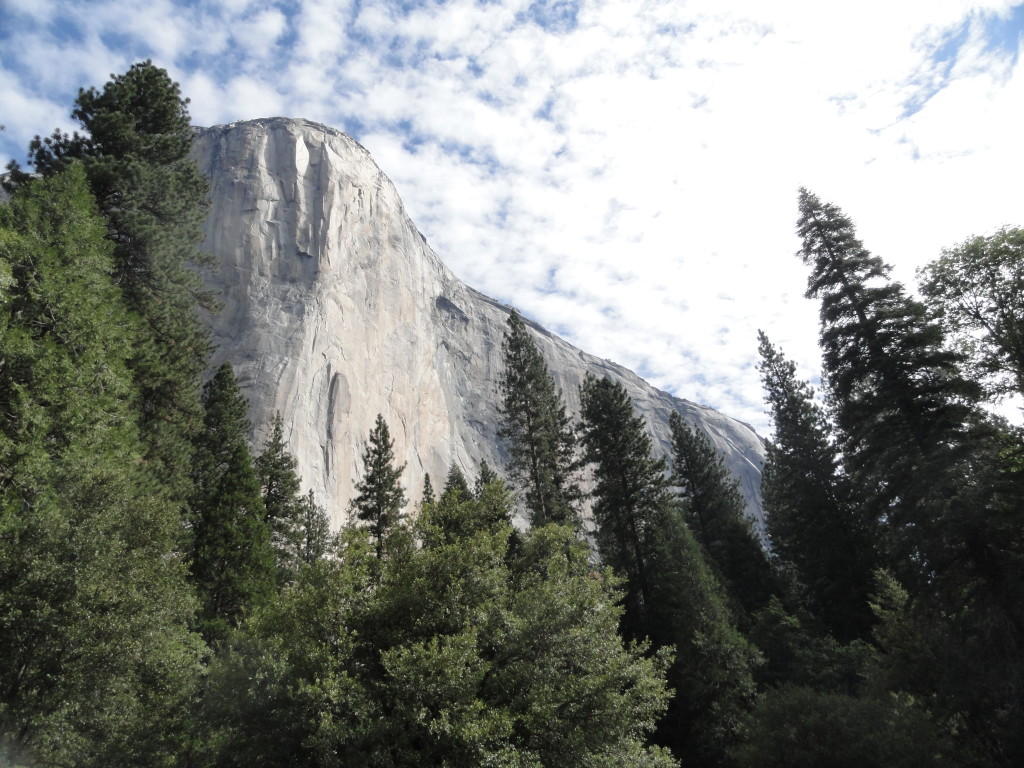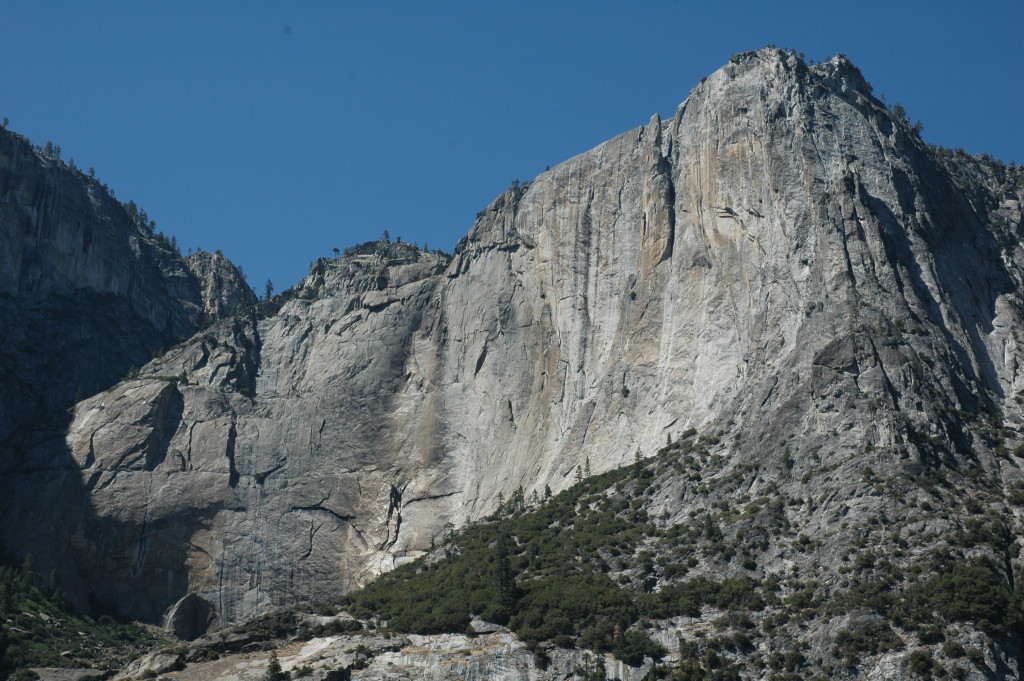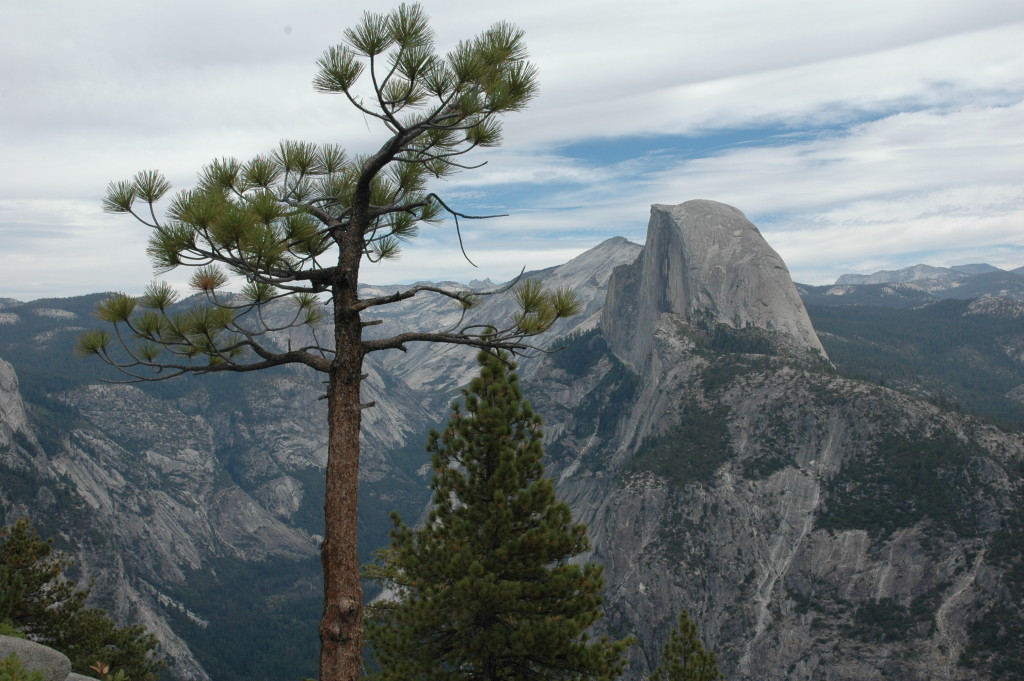Yosemite National Park is arguably one of the most beautiful places on Earth. It certainly was inspiring enough to Galen Clark, John Conness, John Muir, and Abraham Lincoln – yes, Abraham Lincoln – for it to become our first federally protected land (later a national park). And having seen it close up, from the valley to the cliffs, I can see why they were so inspired.

El Capitan – Yosemite National Park
Studying the science of Yosemite is awe-inspiring in itself. A series of glaciers slithered down an ancient river valley to cut the canyon. Thirty thousand years ago the valley was filled with seemingly living ice, carrying sixteen types of granite rock as it slowly inched its way downward. About 10,000 years ago, after the glaciers melted, you would have found that a moraine had dammed the Merced River near Bridal Veil Falls and created a shallow lake. Eventually that lake filled with sediment to leave the flat valley floor of present day Yosemite.

Yosemite Falls in drier times
El Capitan, the massive granite outcropping that epitomizes Yosemite, boasts the world famous Yosemite Falls. Except when it doesn’t. The thundering falls are actually quite ethereal, violently cascading over the cliff face in the spring as the winter snows melt, then dwindling down to nothing by late summer. As the photo above shows, the thin snow melt season, combined with California’s multi-year drought, has left its mark on the cliff walls where the falls once roared.

Half Dome from Glacier Point
The other iconic feature of Yosemite is Half Dome. Never a complete dome, it nevertheless has been shaped by millennia of glacial action, erosion, rock falls, and earthquakes to reach the smoothed and cut shape it has today. Just one of many domes in Yosemite, which hosts more domes than anywhere else on Earth, Half Dome is the result of a geologic process called “exfoliation,” where huge slabs of curved rock split off and fall to the valley below.

Mariposa Grove
But Yosemite shouldn’t all be taken for granite; the Park also encompasses the Mariposa Grove of Giant Sequoia trees. Once widespread in North America, Europe, and Asia, the Giant Sequoia now are limited to a few dozen sites on the western slopes of the Sierra Nevada mountains. Joined by their close cousins, the Coast Redwoods, these huge trees inspire one to gaze skyward and contemplate the majesty of the heavens.
I’ll pick up on the great trees in future posts as Science Traveling explores other National Parks…and beyond.
David J. Kent is an avid traveler and is currently working on a book about his experiences traveling in Argentina. He is also the author of Tesla: The Wizard of Electricity and the ebook Nikola Tesla: Renewable Energy Ahead of Its Time.
Follow me by subscribing by email on the home page. And feel free to “Like” my Facebook author’s page and connect on LinkedIn. Share with your friends using the buttons below.











Inspiring piece and great shots. Makes me regret i haven’t been – yet.
Definitely worth going to. I was reading the act that created Yosemite (signed by Lincoln) at the Lincoln Presidential Library and it reminded me of this post.